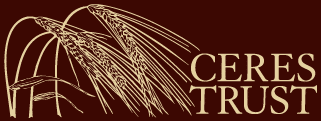Control of plum curculio and codling moth using strip cultivation in organic apples
Graduate Student: William B. Baughman, Michigan State University, Dept of Entomology
Major Professor: Dr. Matthew Grieshop, Assistant Professor, Michigan State University, Department of Entomology
View/Download Full Report in PDF Format
Summary:
To meet the project objectives I completed a set of field experiments and a set of lab experiments, investigating the effectiveness of strip cultivation as a management tool for Codling Moth (Cydia pomonella L.) and Plum Curculio (Conotrachelus nenuphar Herbst). Field experiments were used to assess the effectiveness of the WonderWeeder® —a commonly-used orchard cultivator— in achieving burial and/or physical damage of resting/pupating stages. Lab experiments were used to assess survival of the insects at different depths of burial.
Two field experiments were performed: one each with plum curculio and codling moth. For the plum curculio field experiment, thinning apples ordered from the USDA Research Center in Yakima, WA were infested in the laboratory with plum curculio larvae. This was achieved by exposing 60 mesh bags of 50 thinning apples each to 2 male and 4 female plum curculio adults. Adult weevils were acquired from the plum curculio colony maintained by Pete Nelson and Dr. Mark Whalon at the Michigan State University Pesticide Alternatives Laboratory, and separated by sex. After exposure to the breeding weevils, samples of 5 apples were taken from each bag and assessed for successful infestation. The 50 bags with the greatest number of larvae found in their apples were used for the field experiments – all apples sampled from these contained at least one weevil larva. Each of the 10 “Control” experimental units, which consisted of 50 fruit each, contained one apple from each of the above 50, while each “Cultivation” experimental unit (also 10), which consisted of 150 fruit, consisted of 3 fruit from each.
Two adjacent rows were selected at random in a mature orchard in Flushing, MI. Bags containing the Control apples were dumped across ten roughly 5 x 2 foot areas adjacent and parallel to tree row, evenly spaced – 50ft. apart – in the rows. Bags containing Cultivation apples were dumped identically in the adjacent row. The apples in the Cultivation row were then gone over using a custom built ground-driven Lilliston-style cultivator by the orchard owner. We then attempted to recover all the apples, recording percent of apples that were buried, estimating the range of burial depths we observed as we were digging them up, and rating each individual apple according to how badly damaged it was. The damage scale we used was 0-3: 0-undamaged, 1-surface damage, 2-deep gash and exposed apple flesh, 3-apple cut entirely apart by blades of tiller. After apples were collected, they were placed in a mesh bag and left in the orchard to assess difference in adult emergence from damaged apples.
For the codling moth field experiments, similar methods were employed. Pupae were ordered from the USDA Research Laboratory in Yakima, WA. Rather than infesting dropped/thinning apples, we instead wrapped the pupae in bright label tape in order to: simulate the leaf litter that is their preferred environment when pupating on the ground, make the pupae easier to locate, and attach a small metal nut to each without damaging the pupa, to facilitate the use of a metal detector to locate buried pupae. We performed the experiments in the same orchard used for the plum curculio cultivation 9/15/13 experiment, and in the same way (previous paragraph). We used a metal detector to locate the buried pupae and sample size was 8 per treatment rather than 10. Percent burial and approximate depth range were recorded. After being collected, pupae were returned to the lab and unwrapped, the number of physically damaged pupae was recorded, and they were placed in rearing chambers in the same proportions of buried and exposed pupae as they were found in the field, to assess survival and emergence as adults.
